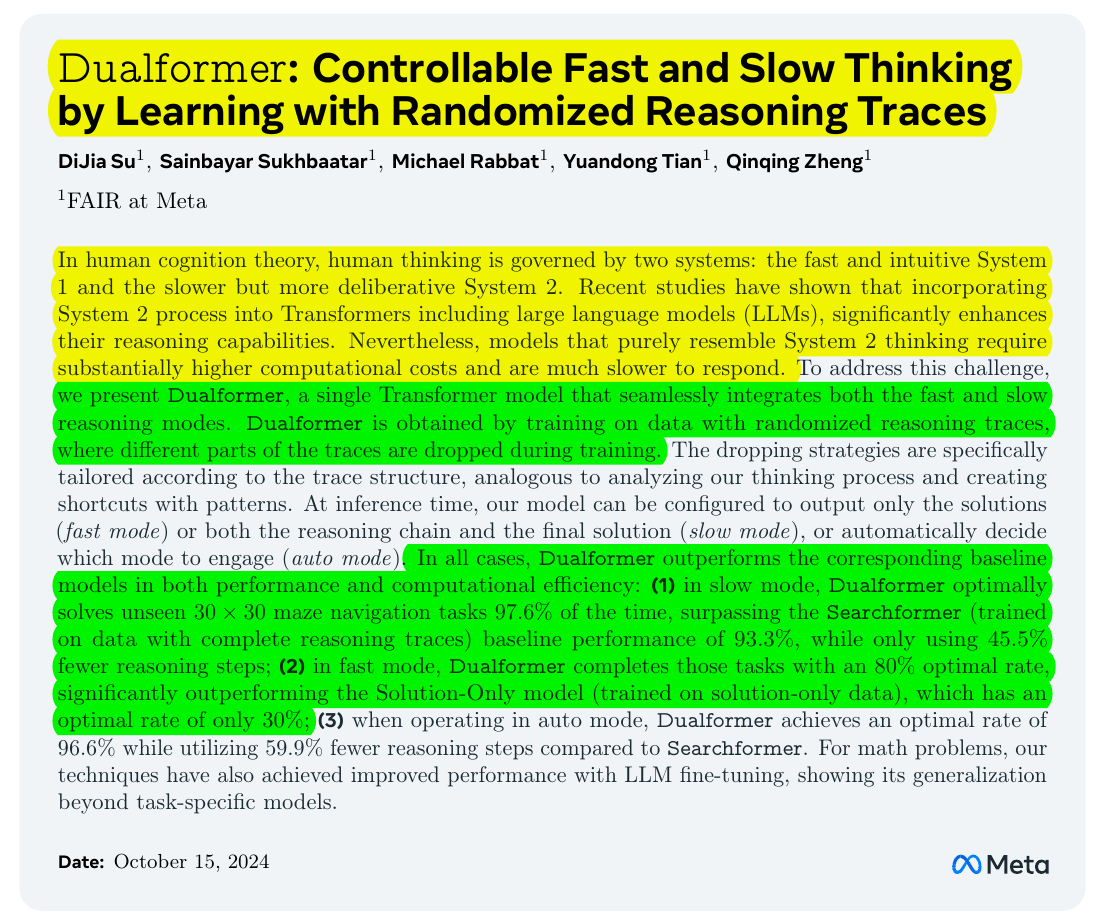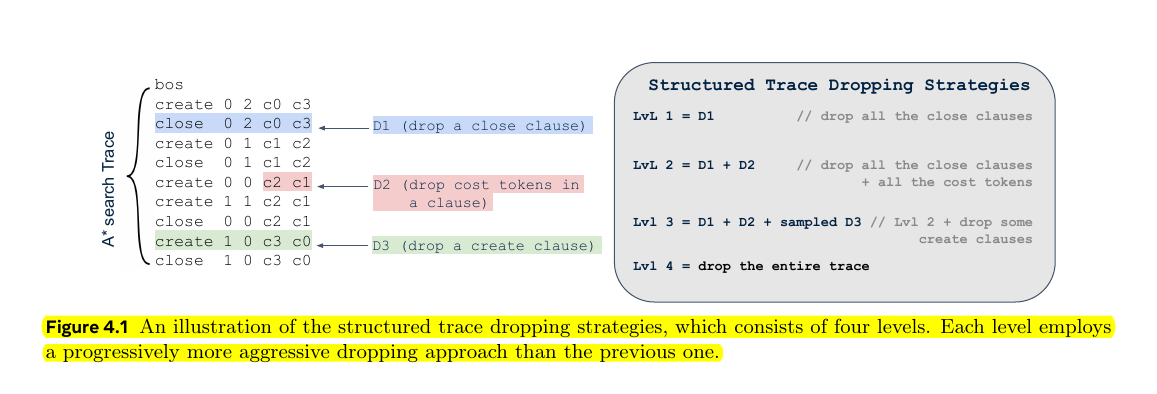Dualformer: Controllable Fast and Slow Thinking by Learning with Randomized Reasoning Traces
One brain, two speeds: AI that knows when to sprint and when to walk
One brain, two speeds: AI that knows when to sprint and when to walk
Great Paper from @Meta
Dualformer trains transformers to think both fast and slow, just like humans do.
Original Problem 🎯:
Current Transformer models either operate in slow mode with detailed reasoning or fast mode with direct answers, but not both. This limits their flexibility and efficiency in solving complex reasoning tasks.
Solution in this Paper 🔧:
• Introduces Dualformer - a single transformer model integrating both fast and slow reasoning modes
• Uses structured trace dropping strategies during training:
Level 1: Drops close clauses
Level 2: Additionally drops cost tokens
Level 3: Randomly drops 30% create clauses
Level 4: Drops entire trace
• Employs randomized training with different dropping probabilities
• Can operate in fast, slow, or auto mode during inference
Key Insights 💡:
• Simple data recipe suffices to achieve dual-mode reasoning
• Structured trace dropping mimics human cognitive shortcuts
• No need for separate models or explicit controllers
• Generalizes beyond specific tasks to LLM fine-tuning
Results 📊:
• Maze Navigation (30x30):
Slow mode: 97.6% optimal rate vs 93.3% baseline
Fast mode: 80% optimal rate vs 30% baseline
Uses 45.5% fewer reasoning steps
• Math Problems:
Improved performance in LLM fine-tuning
Generates 61.9% correct answers vs 59.6% baseline
Reduces trace length by 17.6%
🔍 The central theme about Dualformer:
Dualformer integrate both fast and slow reasoning modes into a single transformer model.
Dualformer achieves this through a simple data recipe using randomized reasoning traces during training
It can operate in either fast mode (direct solution) or slow mode (with reasoning steps) during inference
The model automatically decides which mode to use if not specified
🤖 The key innovations in Dualformer's training approach
Uses structured trace dropping strategies that exploit the A* search trace structure
Randomly applies different levels of trace dropping during training
Dropping strategies range from removing close clauses to dropping entire traces



